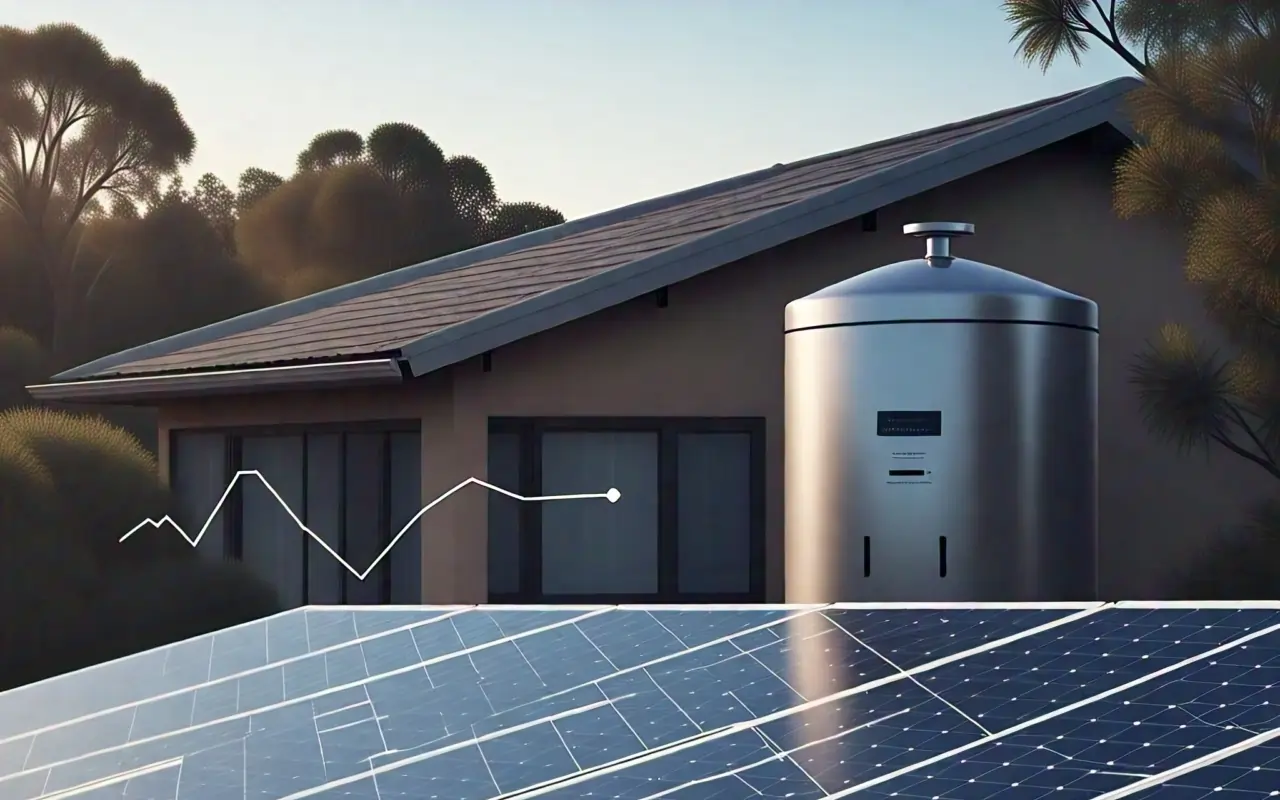If Australian households switched their hot water heaters to run off daytime solar power, it could lead to significant reductions in carbon emissions and lower energy bills, while maximising the benefits of cheap, abundant solar energy. Hot water heating is responsible for 15-30% of a home’s total energy consumption, second only to heating and cooling systems. A large proportion of Australian households use electric water heaters with storage tanks, which act like thermal batteries, storing more energy than many home battery systems. Traditionally, these heaters have operated during off-peak hours overnight, but shifting them to run during the day could help soak up excess solar energy, reducing waste and better matching supply and demand.
The Shift to Daytime Water Heating
More than 40% of Australian freestanding homes now have rooftop solar, a significant source of energy during the daytime. However, solar generation peaks in the middle of the day when most households have low electricity demand. This imbalance between solar supply and demand can lead to curtailment, where surplus solar energy is wasted. By shifting electric water heaters to operate during the day, households could absorb this excess solar power and reduce strain on the grid, particularly as renewable energy becomes a larger part of Australia’s electricity mix.
A recent real-world trial in South Australia tested this idea and found it worked effectively. The trial involved 18,000 households with smart meters and electric water heaters. Over the course of a year, around 50% of water heating was shifted from night to day without affecting hot water availability for consumers. Importantly, participating households reduced their water heating emissions by approximately 15%.
Smart Meters: A Key Tool for Energy Management
The transition to daytime heating isn’t as simple as flicking a switch, as many water heaters are hardwired to operate at night as part of "controlled load" circuits. However, smart meters, which are already common in states like Victoria and Tasmania, could offer a solution. These devices can not only monitor energy use but also remotely control appliances like water heaters.
With smart meters, energy retailers or network operators could adjust the timing of water heating remotely, enabling households to use cheaper daytime solar energy. The trial in South Australia showed that households experienced no disruption in hot water supply, and only a tiny fraction (0.3%) opted out of the program. As more renewables are added to the grid, the potential savings for households will likely increase, as solar energy continues to drive down daytime wholesale electricity prices.
Benefits for the Grid and Consumers
Switching to daytime water heating has broader benefits beyond individual households. The trial demonstrated that running water heaters during the day can help stabilise the grid by reducing the risk of solar oversupply. During periods of excess solar generation, voltages in households with rooftop solar can rise, reducing the efficiency of solar exports and potentially shortening the lifespan of some appliances. By soaking up solar energy, water heaters help to keep voltages stable. In the trial, voltage levels in participating households dropped by an average of 2.6 volts, with some homes experiencing even greater reductions.
The trial also showed that water heating demand could be predicted with high accuracy, which is beneficial for electricity grid operators. This predictability helps with day-ahead planning, ensuring that energy demand and supply are better balanced.
What’s Next?
With positive results from the South Australian trial, there is scope to expand this approach across Australia. If smart meters were installed nationwide and water heating was shifted to daytime use, it could move 3.8 terawatt hours (TWh) of electricity from night to day – around 1.4% of the country’s total electricity consumption. This could make a significant dent in the 2.3 TWh of utility-scale solar that is currently curtailed each year due to oversupply.
Heat pumps, which are more energy-efficient than traditional electric water heaters, could also benefit from this shift. However, they require longer heating times and may need slightly different management strategies to ensure compatibility with smart meter control.
A Future with Cheaper, Greener Energy
As Australia continues to embrace renewable energy and more households make the switch to electric water heating, running these systems during the day will become even more valuable. The smart meter solution offers a practical way to reduce emissions, stabilise the grid, and cut energy costs for consumers. As we move towards a cleaner, greener future, harnessing the power of the sun to heat our water is a small but significant step that could help Australia meet its emissions reduction targets while saving households money on their energy bills.
Article information source: The Conversation - If our hot water heaters ran off daytime solar, we would slash emissions and soak up cheap energy
